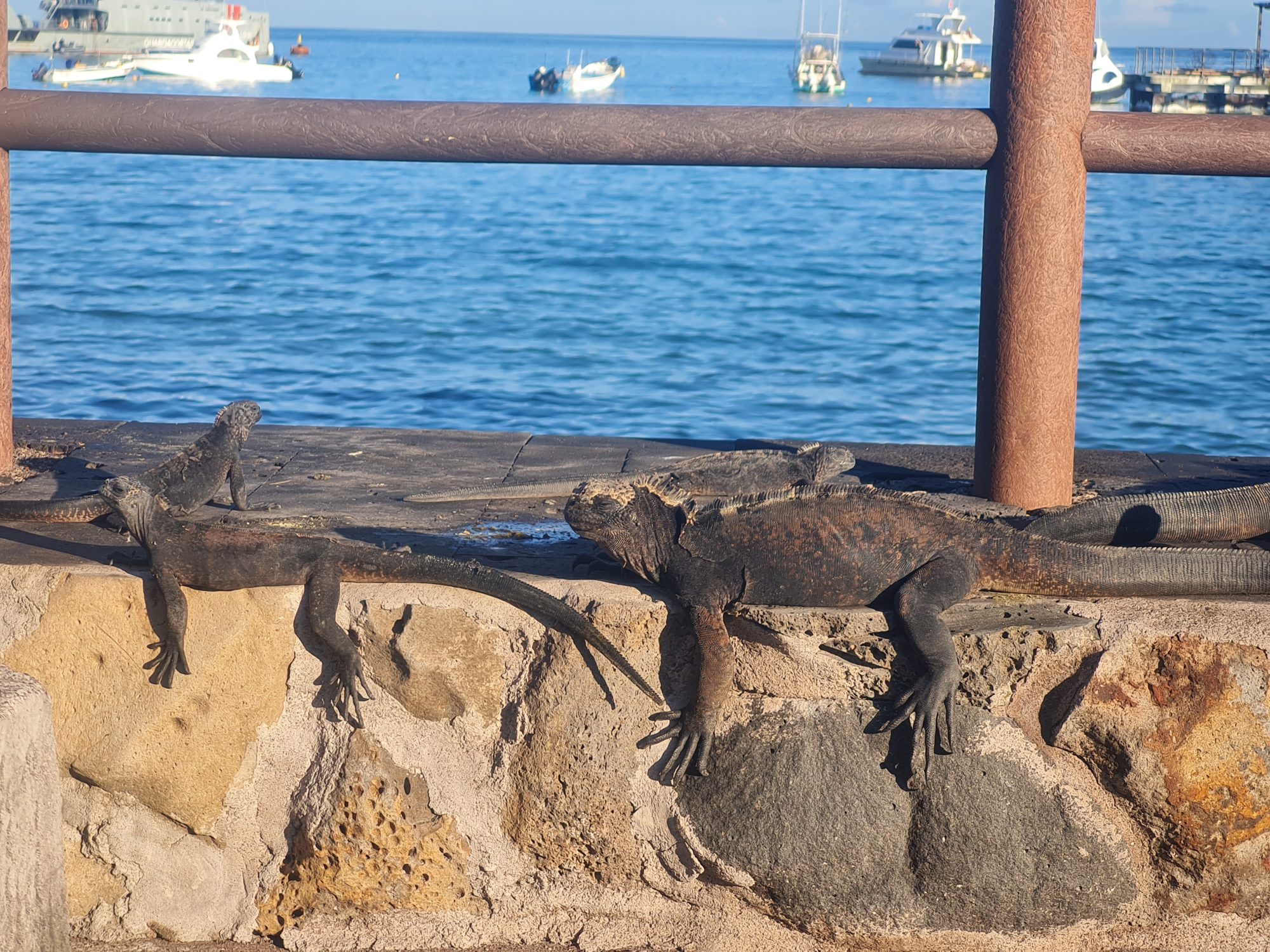The dream of many:
The Galapagos. Is it paradise on earth, or a little hell, as the first seafarers thought? The mostly barren landscape made survival difficult for humans, but it was a true paradise for the animals. Consequently, an enormous variety of endemic species developed on the Galapagos Islands — species that only exist there.
The Galapagos Islands inspired Darwin’s theory of evolution. He found inspiration in the famous finches with their adapted beaks, the iguanas that feed on sea algae and the renowned Galapagos tortoises, of which 12 subspecies are still alive today. Each tortoise specialises in a particular island or volcano and is visibly different from the others.
The wildlife in the Galapagos is overwhelming, not because of the diversity of species, but because of the sheer number of animals and how unafraid they are of humans. Sea lions lie in the middle of paths and benches that they have reserved for themselves, even throwing tourists’ belongings aside. It’s impertinent of tourists to think they can use them – probably thinks the sea lion.
Arriving in the provincial capital
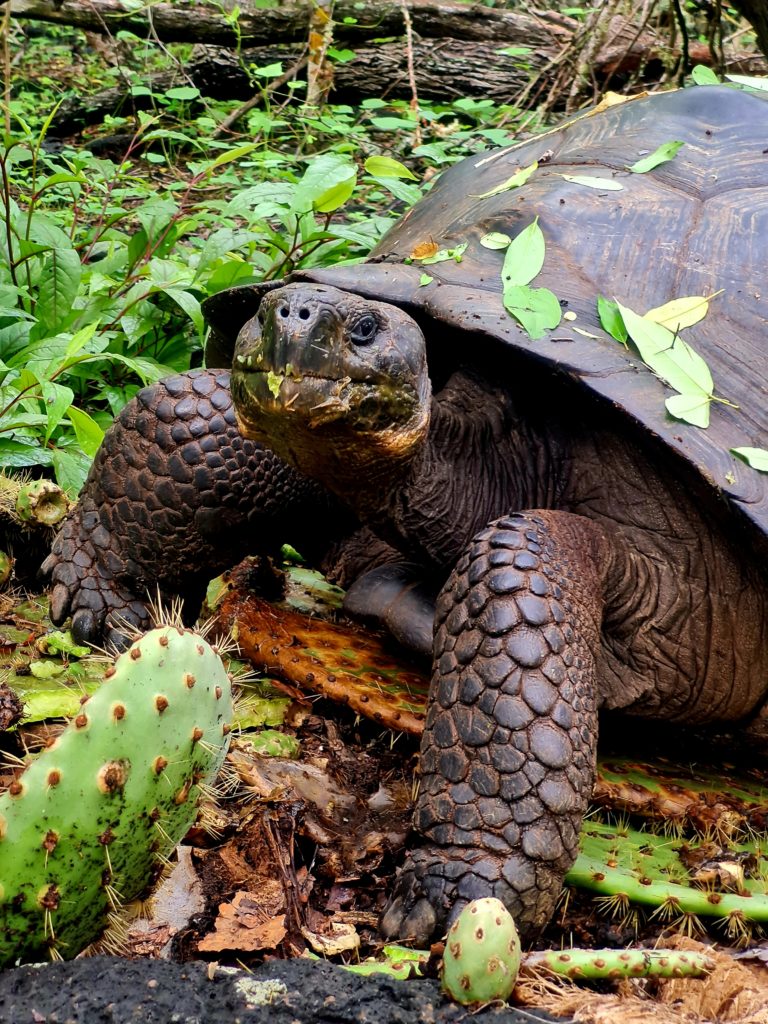
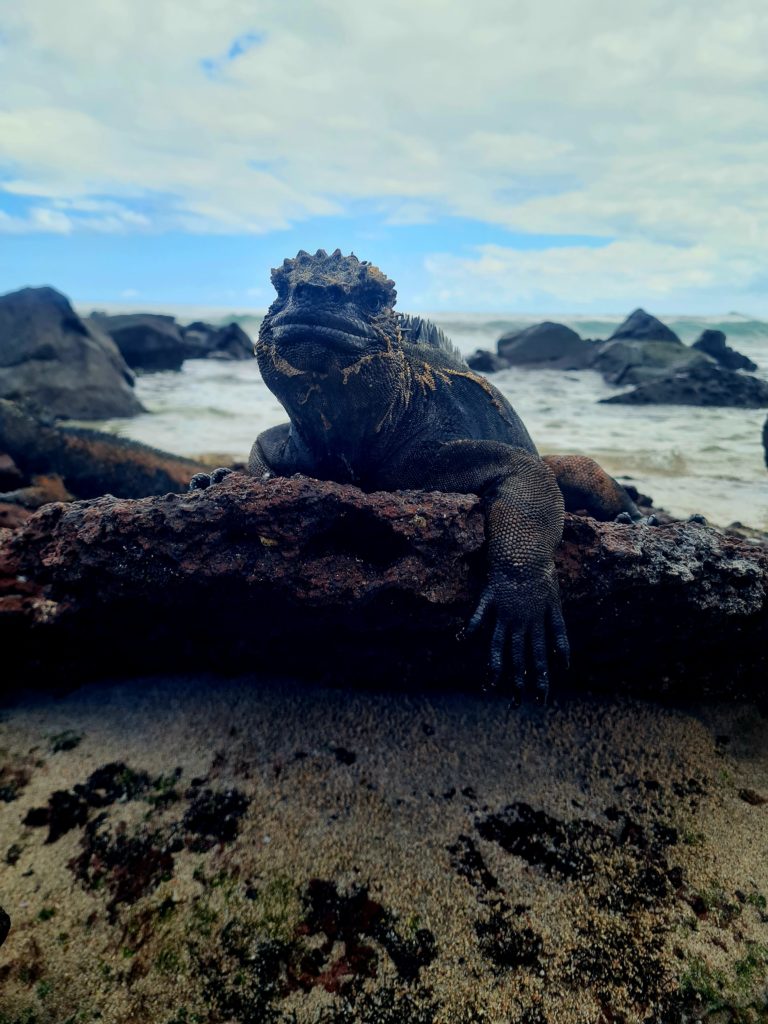
We fly to San Cristóbal, a small provincial capital. The islands were discovered in 1535 and have belonged to Ecuador since 1832. Before that, they were a pirate stronghold, as the poor access to drinking water made the islands an unattractive place to live.
We spent a long time on the archipelago to make the most of the entrance fee. The Galapagos are expensive – unless you stay long enough. Entry to the national park is paid for directly at the airport, and thee doubled to 200 US dollars in 2024. It doesn’t matter how long you stay, but you must show proof of a return flight.
The small airport is ideal: after the strict controls (everything that goes in or out is checked), we walked five minutes to the village.
The main attraction is the cruises: small cruise ships that allow you to visit uninhabited and remote islands. However, these cost several thousand dollars for a week. This was beyond our budget, so we had to organise our own trip.
We rented a small holiday flat. It was all about switching off and enjoying ourselves. That worked quite well. Everything is within walking distance, the promenade is full of sea lions – which are a bit smelly, but it’s worth watching them play, dive, sleep and suckle.
A holiday routine: snorkelling and eating
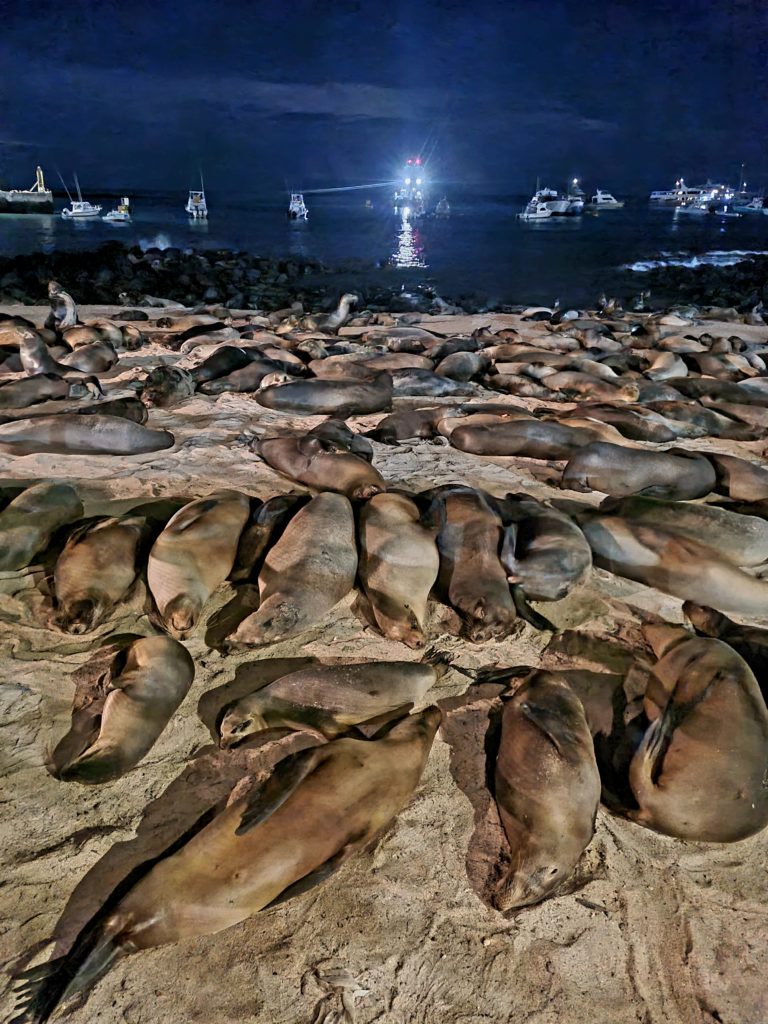
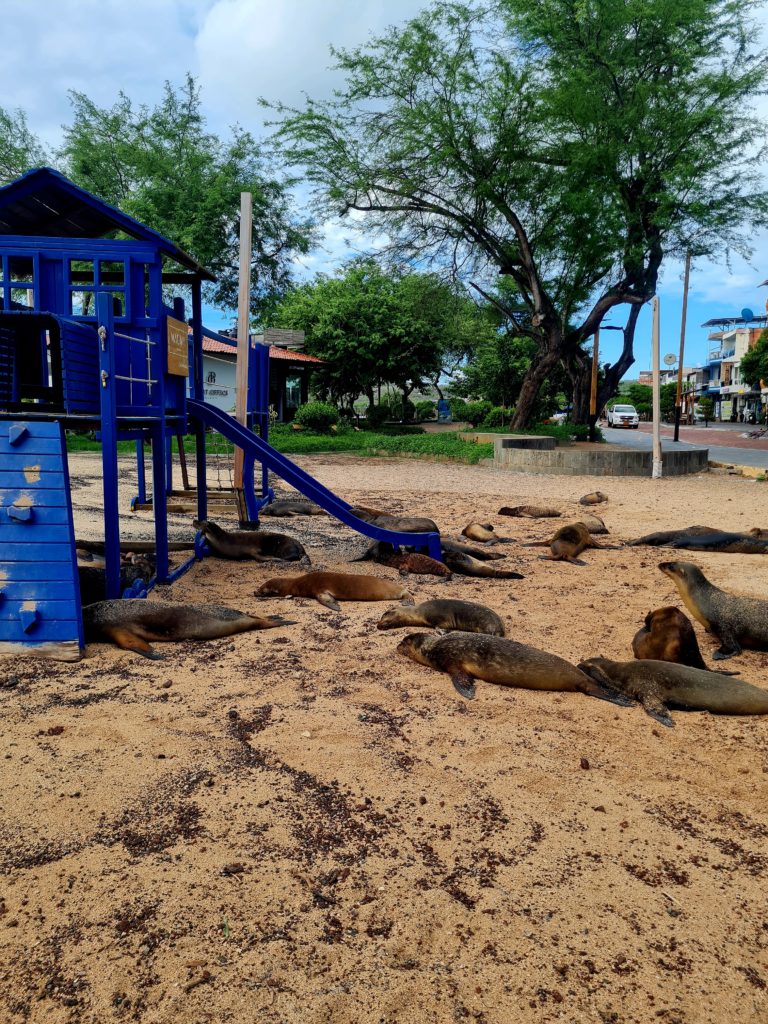
We swim every day – even when it rains. We stay in basic AirBnBs and eat at the market: fresh fish, rice, vegetables, soup and lemonade for just 5 US dollars. We have rarely eaten so well. Over time, we also found our favourite restaurant – of course. We often reminisce about this food, as we do now in Colombia, where it’s slightly cheaper but not very good.
There are more tourists on the islands than we are used to, but it’s not overcrowded. And we quickly realise that an organised tours cost a small fortune. It’s easy to spend a lot of money here. But there isn’t actually that much more to see. The sea is like an aquarium everywhere, with sea lions, sea turtles, lobsters, tuna, iguanas, penguins, eagle rays, stingrays, sharks, octopuses and starfish, not to mention countless other species of fish. You can see all of these from the shore with just some diving goggles and snorkel. It’s indescribable.
What about sustainability?
The Galapagos Islands are also full of contradictions. While it presents itself as sustainable, there is hardly any investment in renewable energies. Solar panels would be very expensive (the locals say), so there are hardly any, but there is a diesel generator for electricity. The airport is an exception, as it has its own solar park.
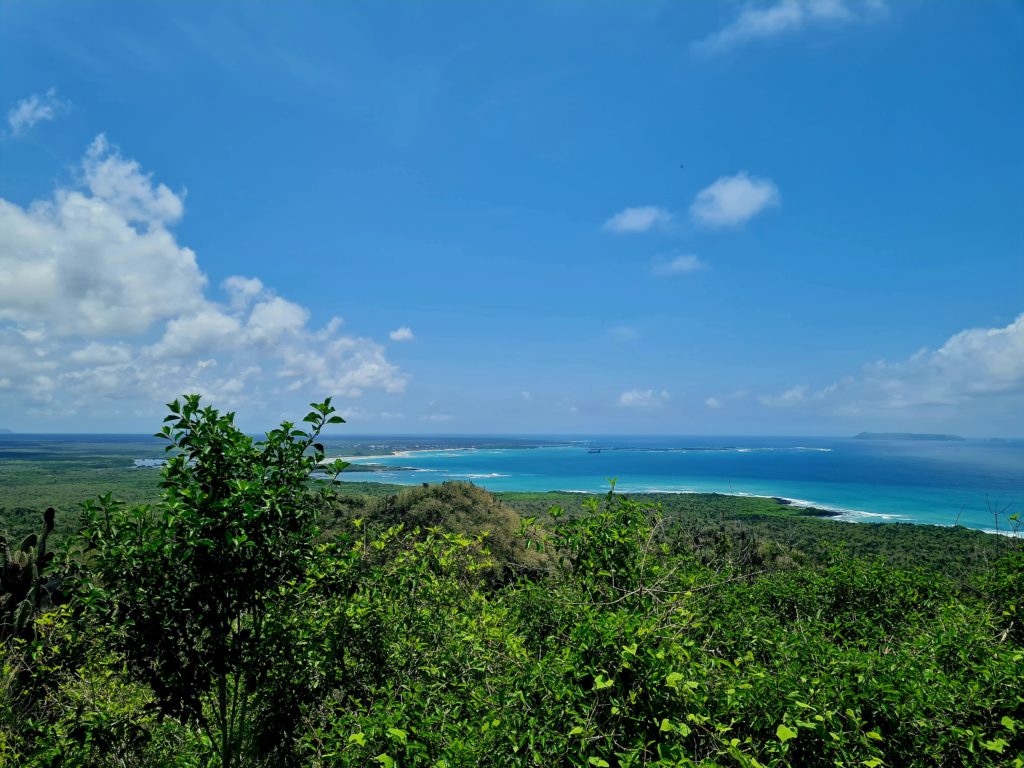
Most vehicles run on petrol. Although some Chinese electric cars are already in use, the taxi drivers claim that they are inefficient. After a 70-kilometre round trip across the island, the battery is apparently half empty and a full tank lasts three days. Their explanation is that there are too many hills. Their calculations make no sense to us, but we soon understand why.
We treated ourselves to a short trip across the island, taking a taxi up the volcano and back down to a beach. The whole journey took four hours and covered less than 60 kilometres. We got out of the car several times to visit various places. The driver stayed in the car with the engine running at full speed for the entire journey.
It’s obvious that the battery would be empty if you left the car running for hours with the AC on.
Then there are the exorbitant prices. The island has a monopoly, which they maintain quite well through price agreements. A half-day excursion quickly costs 100 dollars, and the service is mediocre at best. The real luxury is on the cruise ships, which don’t cost much more if you’d take a tour every day.
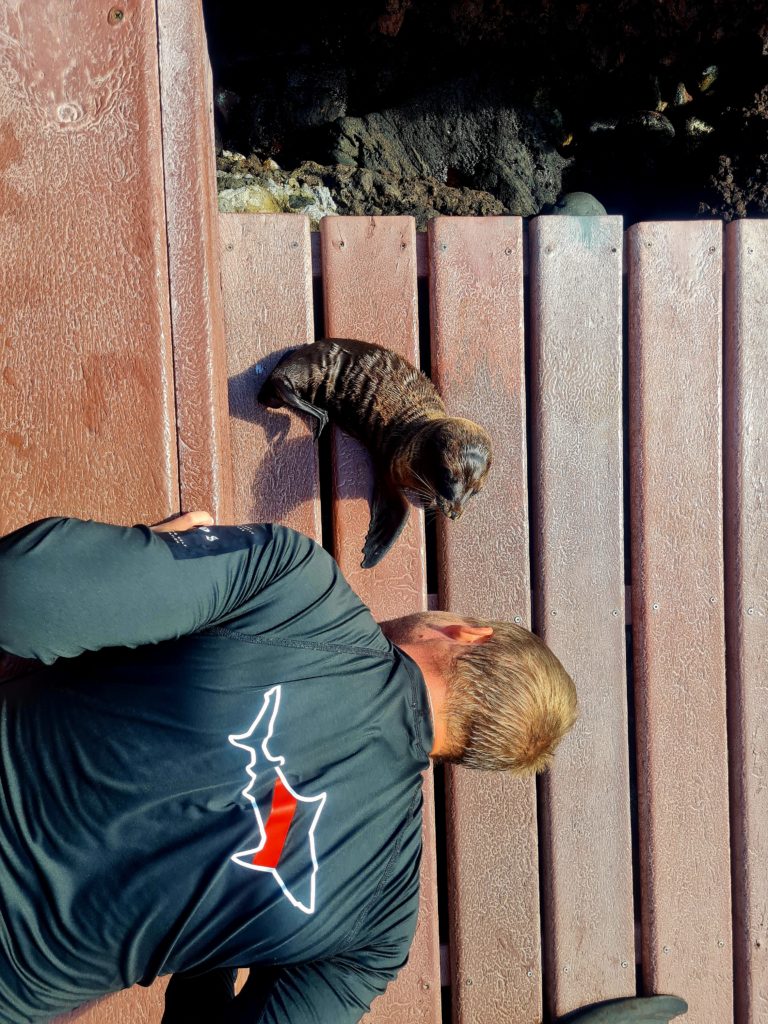
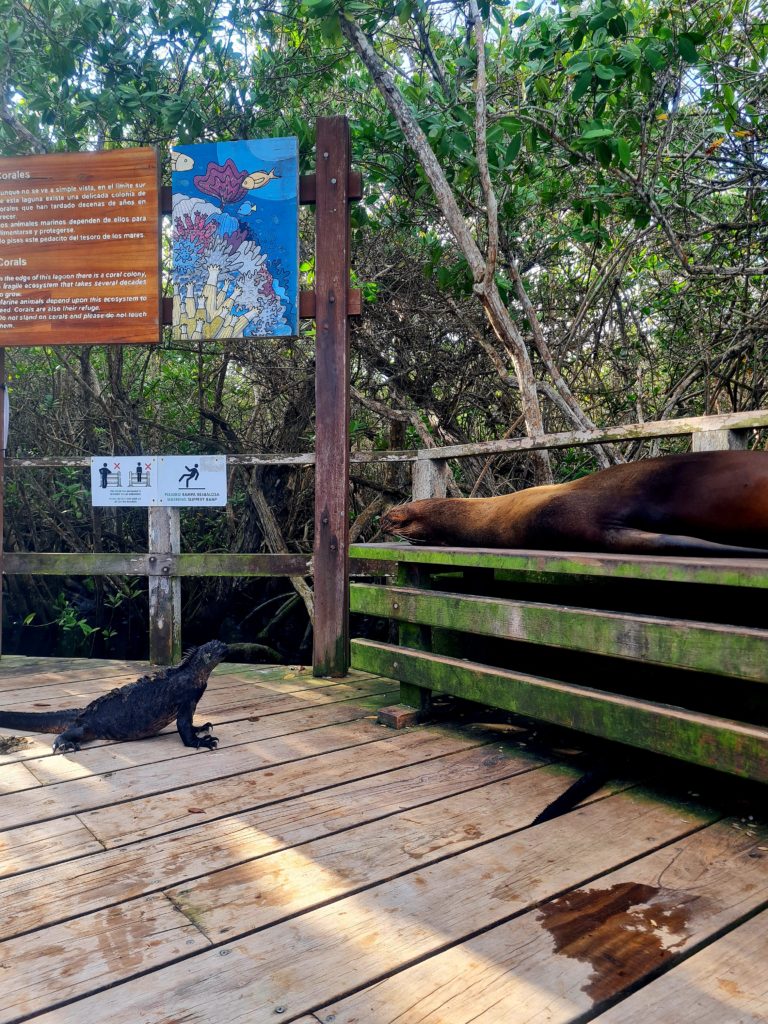
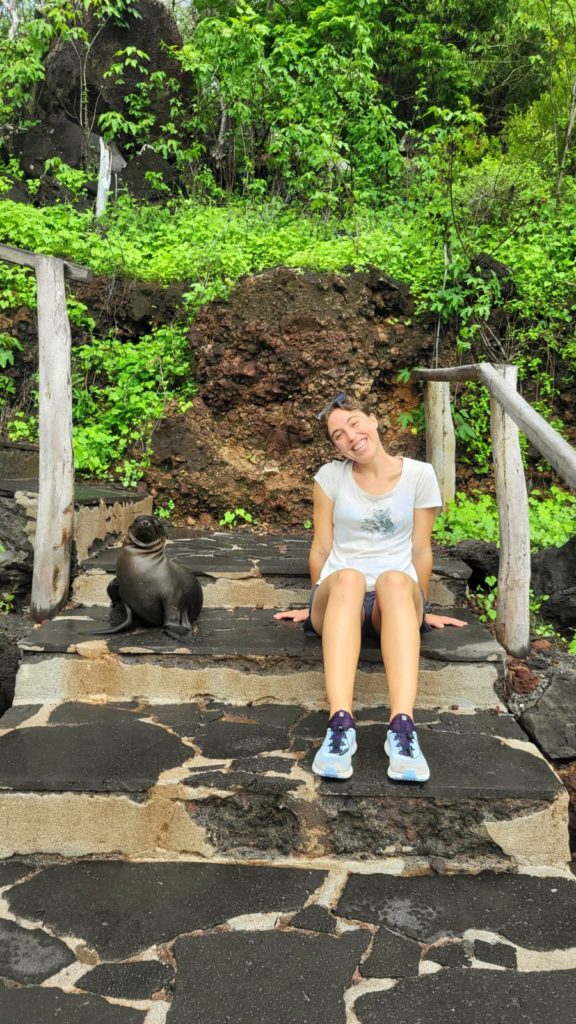
Time is money
The sales strategies of the tour operators are interesting, too. They advertise lots of different animals, but you can actually see them too if you simply snorkel from the beach. All you need is time, but, as we all know, time is money.
As we had time, we visited three of the islands. San Cristóbal is full of sea lions that play with you in the water. We only briefly stayed in Santa Cruz, the tourist capital, where we watched baby reef sharks from the shore. We stayed on Isabela for 10 days and saw many animals right by our beach.
Snorkelling with hammerhead sharks and dolphins
On Isabela Island, we decided to go snorkelling with Elena. We chose Isla Tortuga, where there are big hammerhead sharks. The tour itself was disastrously organised. It was expensive, even though we negotiated the price down from 150 to 100 US dollars per person. We didn’t even receive any food or drink. Visibility wasn’t great either, but that wasn’t their fault. We could still see the hammerhead sharks swimming beneath us.
Then came the big surprise: dolphins! Back into the water immediately! I was lucky and they swim past me. Michael was less lucky. Instead of letting him go first, the guide pushed him away. After all, he wanted to take good photos for social media. One tour is definitely enough — it just isn’t good value for money.
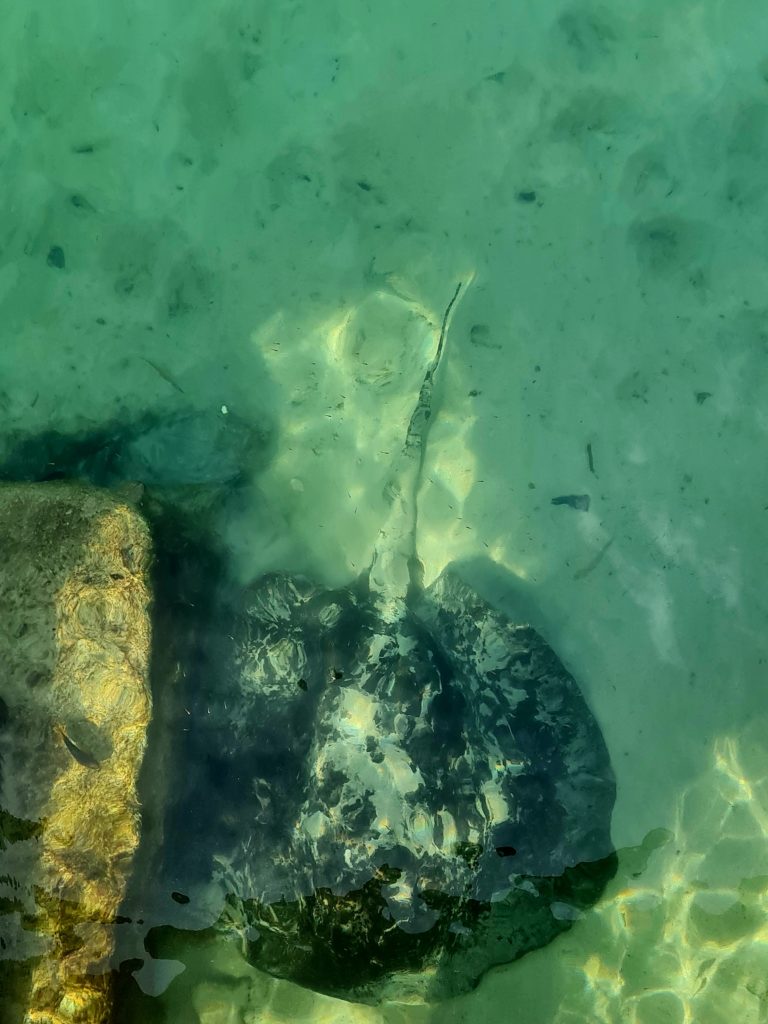
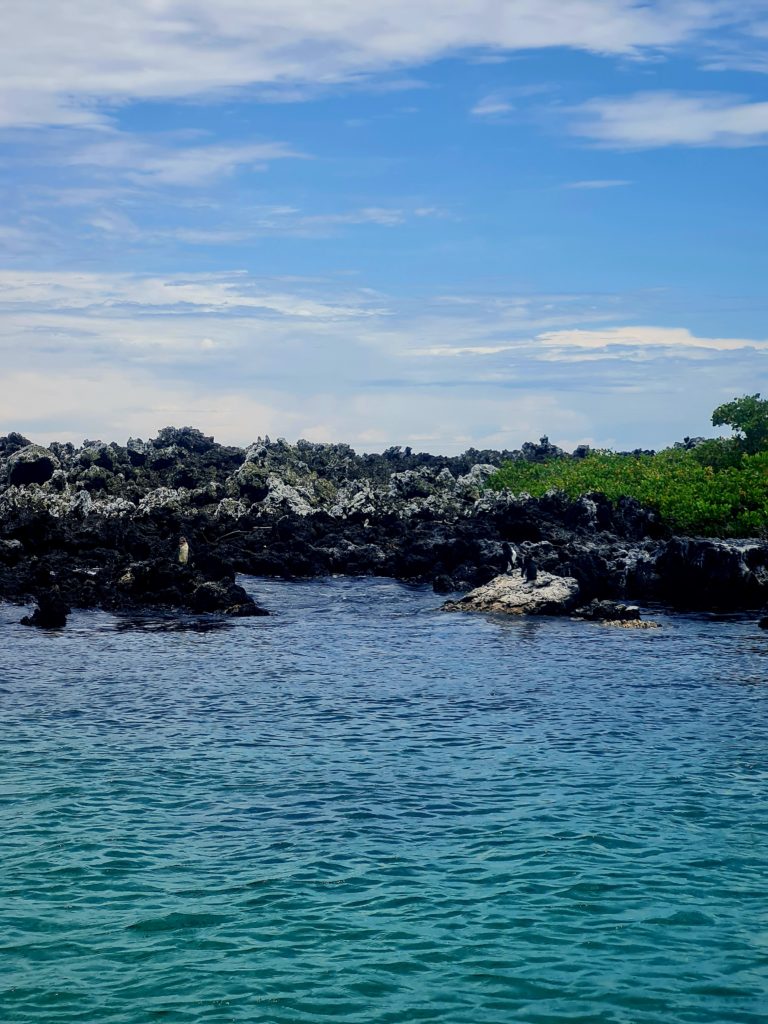
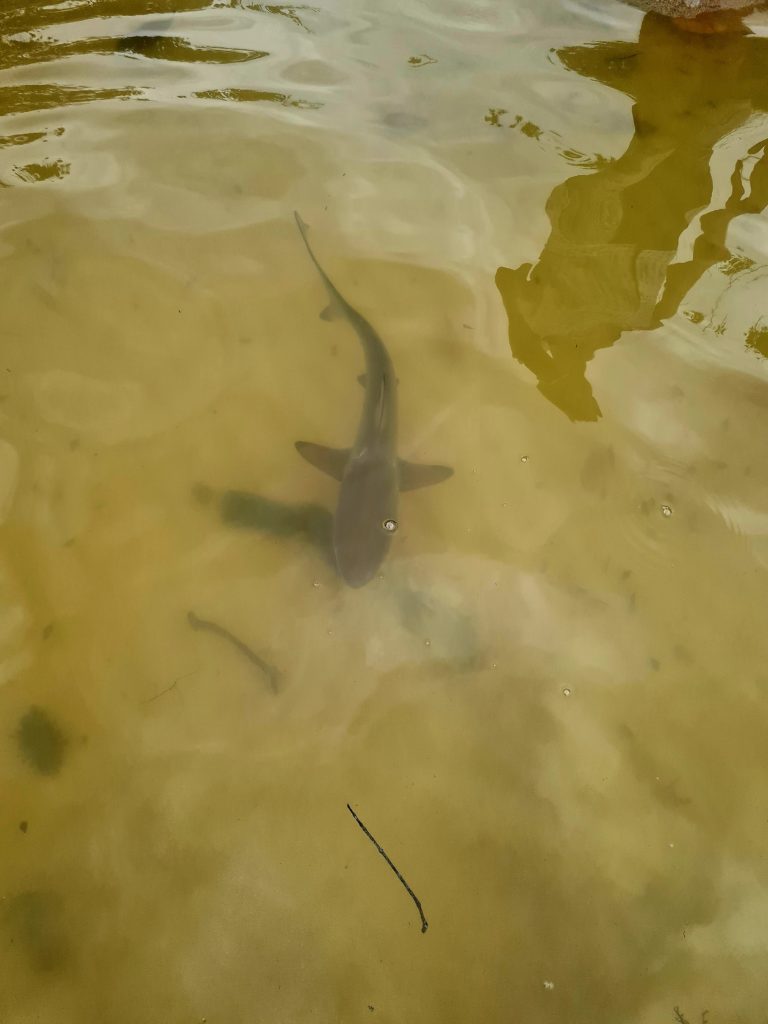
Nevertheless, we treat ourselves to one experience: diving with hammerhead sharks.
The dive is expensive, but impressive. Michael has done it twice, so it must be worth it. Before the dive, the dive guide scares everyone a little: strong currents and mistakes mean death. That sums it up.
The dive itself wasn’t that challenging afterwards. The strong swell kept rocking us back and forth, but everything went quite well. We saw eagle rays and swam with three-metre reef sharks and hammerhead sharks. They didn’t come too close, but they looked rather curious.
Then we swam through a shoal of mackerel. The fish stayed close together without touching us or each other, forming a kind of dark bubble. Suddenly, everything split apart as a shark swam through. It gets dark again, and the game starts all over — only this time, it’s a sea lion! It was spectacular and unforgettable.
For us, the Galapagos Islands were a break from travelling. We enjoyed the animals, the sea, and the delicious food. We were also glad that it didn’t rain every day and that we didn’t have to fix anything on the car. We put all of that off until afterwards.

